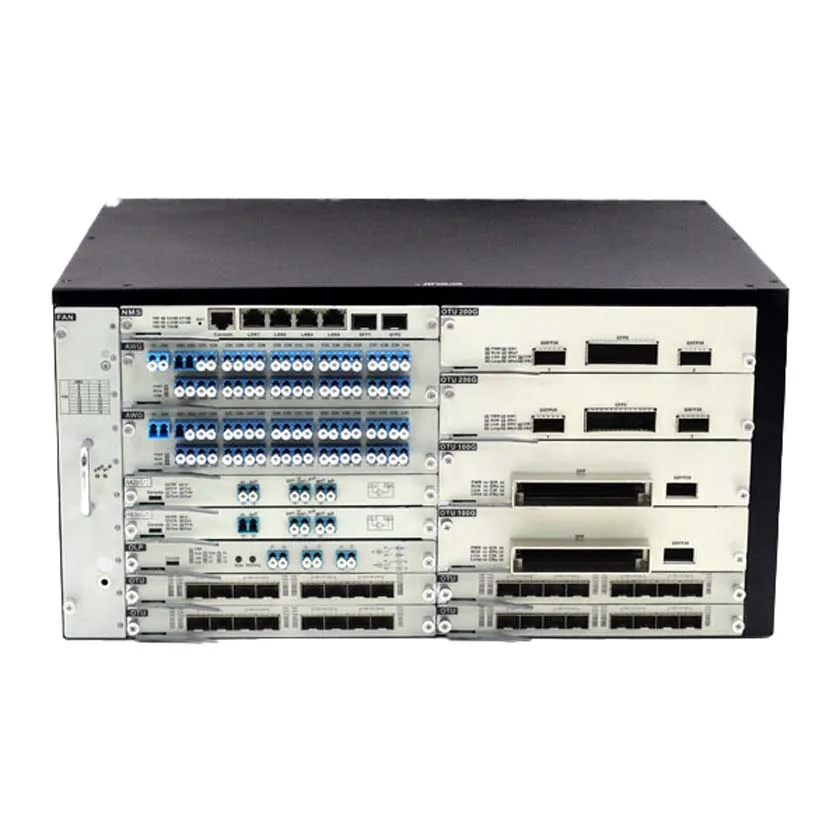With the rapid development of information technology, optical transmission systems play a crucial role in modern communication networks. The HT6000 optical transmission system, introduced by HTF, has become the industry’s focal point due to its compact design, high capacity, and low cost. This article will delve into how the HT6000 leverages its flexible networking capabilities to adapt to various application scenarios, meeting the demands of different network tiers.
Flexible Networking Capabilities
Universal Platform Design
The HT6000 adopts a universal platform design for CWDM/DWDM, meaning it supports both Coarse Wavelength Division Multiplexing (CWDM) and Dense Wavelength Division Multiplexing (DWDM) technologies. This design provides network planners with greater flexibility during networking, allowing them to choose the most suitable wavelength division multiplexing technology based on actual needs to optimize network performance and cost.
Multi-Service Transparent Transmission
In today’s diversified business environment, networks need to support various service types such as data, voice, and video. The HT6000 supports multi-service transparent transmission, enabling seamless transmission of different types of service data on the same platform. This capability not only simplifies the network architecture but also improves resource utilization efficiency and reduces operational costs.
Flexible Access Methods
Equipped with a variety of interface types, the HT6000 supports multiple access methods, including Ethernet, SDH/SONET, and OTN. This allows it to adapt to different network environments, whether in backbone networks, metropolitan area networks, or access networks. It can be flexibly deployed to meet the needs of different users.
Adapting to Various Application Scenarios
National Backbone Networks
In national backbone networks, systems are required to have high reliability and bandwidth. The HT6000’s high-capacity design and advanced wavelength division multiplexing technology ensure signal stability and data integrity in long-distance transmissions. Moreover, its flexible networking capabilities make network topology design more adaptable, facilitating expansion and upgrades.
Provincial Backbone Networks
For provincial backbone networks, there’s a need to balance high bandwidth with cost-effectiveness. The HT6000’s low-cost advantage makes it an ideal choice for building provincial backbone networks. Its universal platform design simplifies unified equipment management and maintenance, reducing operational costs.
Metropolitan Area Backbone Networks
In metropolitan area networks, the network needs to handle a large number of access demands and complex service types. The HT6000’s multi-service transparent transmission and flexible access capabilities enable it to efficiently manage various service requirements within metropolitan networks, enhancing overall network performance.
Other Core Networks
Beyond the aforementioned application scenarios, the HT6000 is also suitable for data center interconnects, enterprise private networks, educational and research networks, and other core networks. Its flexible networking capabilities and high compatibility allow it to play a vital role in various specialized application scenarios.
HTF has demonstrated outstanding performance and continuous innovation in the field of optical communications, excelling not only in technical strength but also winning numerous industry awards. The company has accumulated over 200 industry awards and titles, fully proving its leading position in the industry.
Additionally, HTF owns more than 120 independent intellectual property rights, providing strong protection in the fierce market competition and establishing its status as a technology leader. The company also holds over 160 invention patents covering key areas of optical fiber transmission, showcasing its deep accumulation and continuous innovation in technology research and development.





